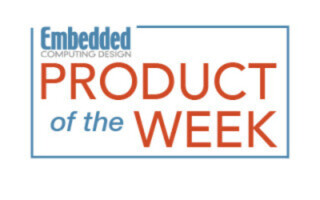IoT Medical Device Security Risks and Mitigation
December 22, 2022
Blog

This article will explore the IoMT risks associated with medical devices and the countermeasures IoMT device manufacturers can take to ensure patient safety and privacy.
IoMT Device Security Risks and Mitigation
The Internet of Medical Things (IoMT) devices are a critical part of healthcare delivery. Deloitte predicted that the IoMT market will be worth an estimated $158.1 billion by 2022. As a result, these devices face an increased risk of cyberattacks, data breaches, and ransomware incidents. These vulnerabilities are a major concern and an obstacle for manufacturers of IoMT devices, as they could lead to the exposure of confidential patient data or create safety and privacy issues.
Medical Device Safety and Privacy Considerations
Medical device security is a broad topic involving life-cycle management, information security, and patient privacy and safety. Life-cycle management concerns the requirements and regulations devices must comply with to ensure patient information is confidential. Information security refers to all other aspects of maintaining data integrity, privacy, and availability. Safety involves ensuring devices are safe for customers to use in various forms and keeping customers away from harm. Privacy concerns are related to how data is communicated or stored on a device and ensuring it is stored in an appropriate way so that data breaches can be handled and patient data is not leaked.
Security is an essential aspect of IoMT device development and should be part of every step in the process. There should be a systematic approach to security and privacy for every device manufacturer. In addition, it is important to provide the maintainable engineering artifacts that come from these processes so that you can have multiple metrics to evaluate the likelihood and severity of the potential risk to your device.
What Countermeasures Can You Take to Reduce Cyber Security-Related Risks?
- Technology Countermeasures: The use of various technologies is a common countermeasure that mitigates the risk of data breaches, including Cryptography, Authentication, Authorization, Access control, and Logging.
- Procedural Countermeasures: There are procedures you can take to make sure you identify how a medical device is supposed to be used, where it is used, and the environment it is used in to make sure it's used properly.
- Legal Countermeasures: Legal documents specify the scope of the device, including where and how it should be used.
Unique Requirements for IoMT
In IoMT environments, cryptographic tools are critical. They provide the foundation for all technical controls and must be fast, flexible, and configurable while still maintaining security. The Allegro ACE Cryptography Toolkit meets these requirements. This cryptography library has been validated by Federal Information Processing Standards (FIPS) and the National Institute of Standards and Technology (NIST) to support standards-based security features like authentication, encryption, and key management in an efficient way. Visit allegrosoft.com to learn more.
Security Concerns Are Essential as The IoMT Market Grows
The medical device industry is on the cusp of a revolution. The IoMT market is set to grow exponentially as technology becomes more advanced and accessible. As this happens, it will be even more essential for manufacturers to keep up with emerging security standards so that they can continue offering secure IoMT products that prioritize patient security, privacy, and safety.
Allegro Software’s VP of Marketing, Loren Shade, has been involved in the embedded industry for over 25 years. He has worked with numerous industrial, military, and commercial clients to integrate and adopt networking and connectivity into their embedded products.





